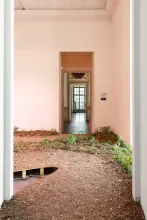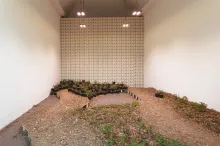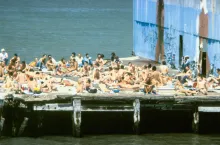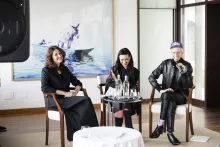Pick Pocket Paradise
Pick Pocket Paradise is an utopian/imaginative reappropriation of cruising, a practice among gay men of seeking sexual exchange in hidden urban places like parking lots, parks, and abandoned industrial buildings. Through the stories and memories of others (friend and companions), but also using their own imaginations, reconstructing often fragile and ephemeral minor archives, the artists are able to access a reality from which, as women and lesbians, they are excluded.
Their work for the project involved gathering visual documents and accounts of the piers along the Hudson River in late 1970s New York. For the artists, these places were charged with a “potential of futures”, as a crossroads of political, sexual, and artistic experimentation for a queer community that, just prior to the privatization of the urban space and the dramatic advent of AIDS, included artists and photographers Alvin Baltrop, Frank Hallam, David Wojnarowicz, Keith Haring, Peter Hujar, Gordon Matta-Clark, TAVA (Gustav von Will), and Samuel R. Delany.
Their presence pervades the exhibition space through Frank Hallam’s 1982 diffracted and repeated photograph En masse, Sunners Seen from Pier 45, a glimmer of an archive linked to vanished bodies and subjects, recalling the fragile condition of queer communities and lives, while also rekindling the reverberation of the creative utopia of the piers.
Pick Pocket Paradise sets out to recreate what the artists define as “the emotional temperature” of an open-air space that is at times stinging and uncomfortable: crossing it, the body must alter its usual gait, walking through a passageway filled with nettles, wild plants commonly known for the itching and burning sensation they cause on contact with the skin.
https://www.castellodirivoli.org/mostra/espressioni-con-frazioni/
installation with nettle plants, LED lamps, wallpaper, ghostly precences
dimensions determined by the space
reproduction of Frank Hallam’s photograph En Masse, Sunner Seen from Pier 45, 1982
© Frank Hallam, Courtesy The LGBT Community Center National History Archive and Leslie-Lohman Museum of Art






